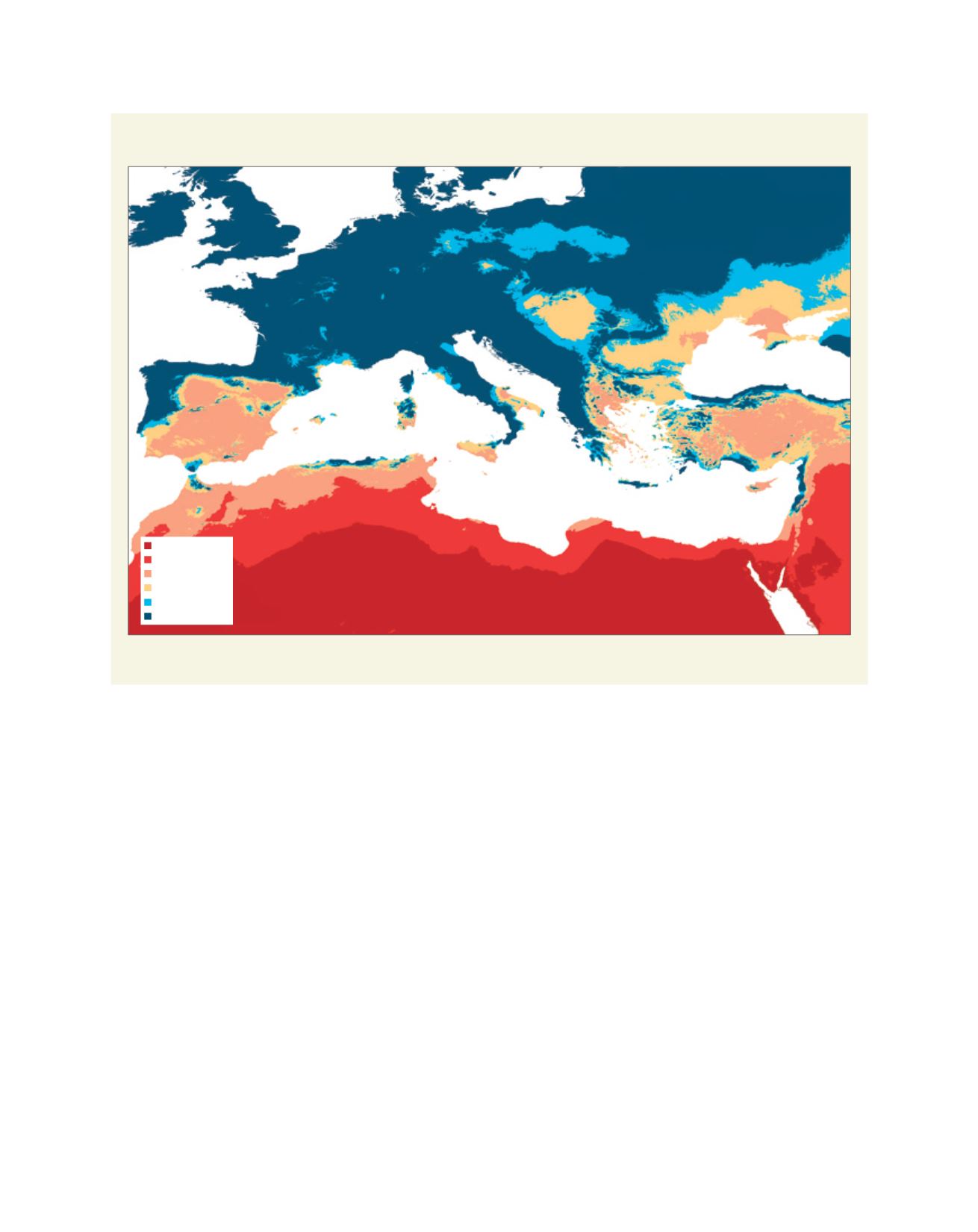

[
] 60
Aridity index for the Mediterranean region, 1950-2000
Source: Lúcio do Rosário, based on FAO (PM) CGIAR-CSI
ized by the occurrence of below-normal precipitation values,
recorded during an extended period, associated with a change
in the distribution of rainfall, with significant reduction of
precipitation in spring and an increasing period of water
deficit. This affects the normal development of vegetation and
weakens soil resources and agricultural production.
However, other major causes of desertification can be seen
in all the unsustainable activities linked to the use of natural
resources and agriculture, including agricultural bad practices.
These include deep and continuous crop farming on greater
slopes; monoculture that leads to loss of soil nutrients and its
breakdown; the use of species not suited to the climate or soil;
contamination of soil by overuse of fertilizers, herbicides and
pesticides; use of heavy farmmachinery, and use of poor-quality
water with the consequent risk of soil salinization and sodization.
Activities related to livestock may also cause severe soil/water
degradation, such as grazing or excessive livestock density in
a given area resulting in the appearance of tracks favouring
shallow seepage and soil compaction by excessive cattle tram-
pling. We should also mention the extensive destruction of
shrubland for land use changes, deforestation and the exces-
sive consumption of water (tourism and agriculture irrigation)
that lead to the reduction and depletion of groundwater, which
often contains excess salts and causes soil salinization. Last but
not least, soil sealing by the creation of infrastructures, equip-
ment and urbanization also have an effect.
One of the main goals of NAPCD 2014 was to develop
cartography and indicators to help decision makers find
appropriate solutions to the management of resources in the
dry territories and at the same time favour and encourage the
recovery of degraded lands areas.
Considering the cartography of the aridity index (the ratio
between precipitation and potential evapotranspiration) for
Portugal it is clear that the area susceptible to desertification
has increased in the last half-century. This is most evident
when comparing the periods of 1970-2000 and 1980-2010,
and even more relevant when looking only at the decade 2000-
2010, which had some particularly severe annual droughts.
Therefore, the aridity or the equivalent susceptibility to
desertification have affected 58 per cent of the territory of conti-
nental Portugal in the last three decades (1980-2010), while in
1960-1990, 36 per cent was affected. In this context the areas
of the south, central and northern interior were included, but
it should be noted that at a national level it is also necessary to
consider the arid areas of south-eastern Madeira Island and the
islands of Porto Santo, Desertas and Selvagens.
The indicator of land productivity relates to the services
provided by the ecosystem and includes information about the
Semi-arid
Dry subhumid
Arid
Wet
Moist subhumid
Very arid
L
iving
L
and
















